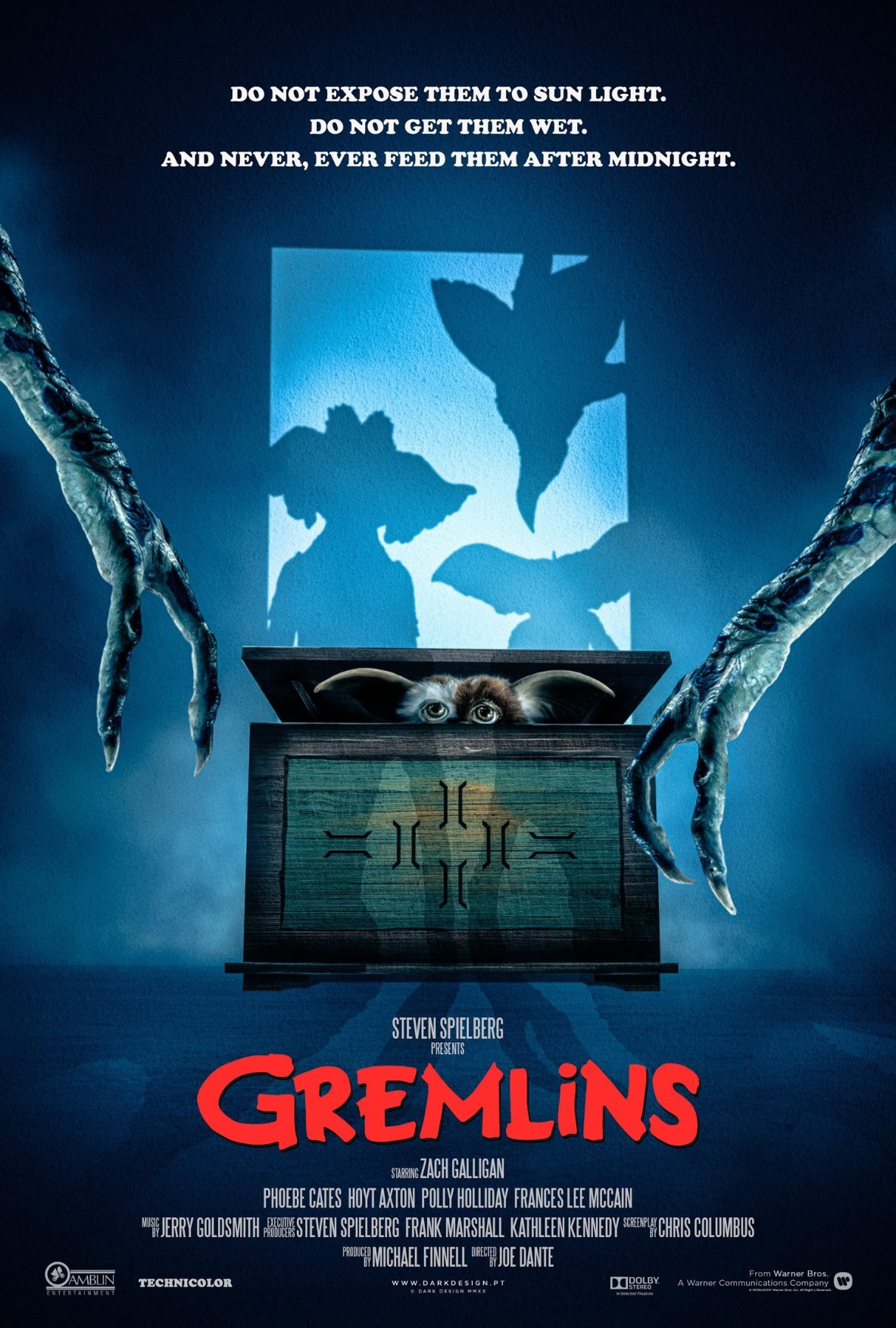Finally, I watched Gremlins—a movie I somehow missed until now, even though it left fingerprints all over my life.
See, when this came out, I wasn’t allowed to watch it. My mom had a strict no-horror policy. But I found the next best thing in the school library: the novelization. I devoured it in one night. So I knew Gremlins through words, not images. And I loved every page.
After that, I chased the tie-ins. I played both video game versions—the Atari 2600 one was a clunky mess, but the Commodore 64 was genuinely great for the era. That’s how I “experienced” Gremlins—as a book and as pixels. Never as a movie. And by the time I was old enough to rent horror films, newer, flashier releases always pulled me away.
So last night, while taking care of my 12-year-old, I decided: let’s finally do it. Gremlins. First time for both of us. Me seeing what I only imagined. My kid discovering a cult classic.
That opening Chinatown scene hit me like déjà vu. For years I pictured Rand Peltzer wandering into a back-alley curio shop. Now there he was—voice, face, the dimly lit store—all exactly where my imagination had left placeholders.
Then Kingston Falls appeared, and it felt eerie. Because I know that town. We all do. It’s Universal’s backlot square—also Hill Valley from Back to the Future. The place where Americana goes to die and reincarnate.
Even stranger: spotting familiar faces in tiny roles. Corey Feldman in a tree suit. Judge Reinhold as a sleazy banker.
And there's the infamous “Santa in the chimney” monologue that Spielberg himself tried to cut—it’s still here, and it feels like a dare to the audience: you came for cuddly Gizmo, now sit through existential holiday trauma.
The film itself is a balancing act. Funny but also cruel. A boy gets a mogwai—adorable, big-eyed, almost too cute. But the rules are ironclad: no sunlight, no water, no food after midnight. And of course every rule is broken.
That’s when Gizmo’s evil cousins show up. The gremlins. Ugly, chaotic, hilarious.
There’s the bar scene—hundreds of them chain-smoking, gambling, destroying everything like it’s their natural right. Watching it, I realized gremlins are basically the town drunk, multiplied into a species. And honestly, they’re almost admirable in their creativity. One second they’re shotgunning beer, the next they’re rigging a puppet show. Destructive but weirdly inspired.
The kills are just as inventive. Sometimes the gremlins get humans. Sometimes humans get gremlins. Until the very end, neither side comes out clean.
This was released as a PG in 1984, but it was this movie (along with Temple of Doom) that forced the MPAA to invent PG-13. Parents complained, but really—it’s the perfect in-between: gruesome enough to thrill, cartoonish enough to laugh at.
Best of all, my kid loved it. Not scared—delighted. She wanted Gizmo as a pet. (Between us, I’m sure she’d screw up the rules faster than Billy ever did.)
Gremlins is a Joe Dante film, not Spielberg. Dante didn’t move on to blockbuster behemoths—his career zigged toward cult brilliance. He made The Howling before this, one of the sharpest werewolf movies ever, and after Gremlins he doubled down with Innerspace, Explorers, and the criminally underrated Matinee.
And of course, Dante returned for Gremlins 2—a sequel that doesn’t bother pretending to be a continuation so much as a demolition derby. It skewers sequels, studio meddling, Wall Street greed, even the audience itself. It’s a movie that turns self-parody into an art form. (And yes, I tore through that novelization too—because apparently reading Gremlins in prose was my thing before ever seeing them on screen.)
So yeah—worth the wait. Gremlins is still electric today. It’s that perfect mix of Amblin warmth and anarchy, a movie that feels like it shouldn’t exist but somehow does. And watching it for the first time, with my kid laughing beside me, was the only way to do it.
@movies@piefed.social

I love how most 'horror' in the movie is mainly jump scare things, but that the Santa story makes it easy more of an existential horror than the film has any right to be.
I think it's the only bit of unfilmed exposition in cinéma history to have such an impact in that it changes the memory of that movie entirely.